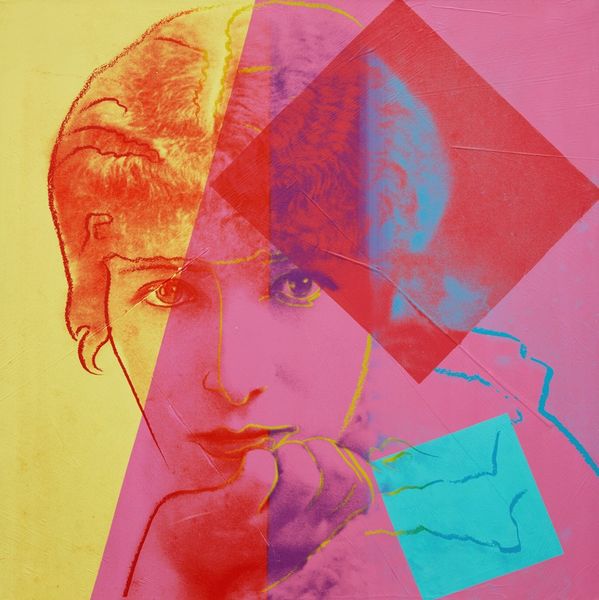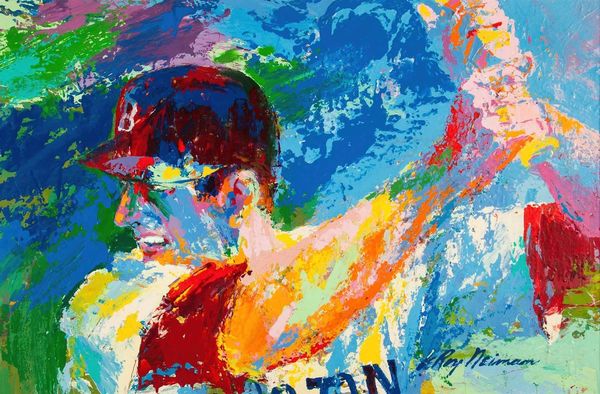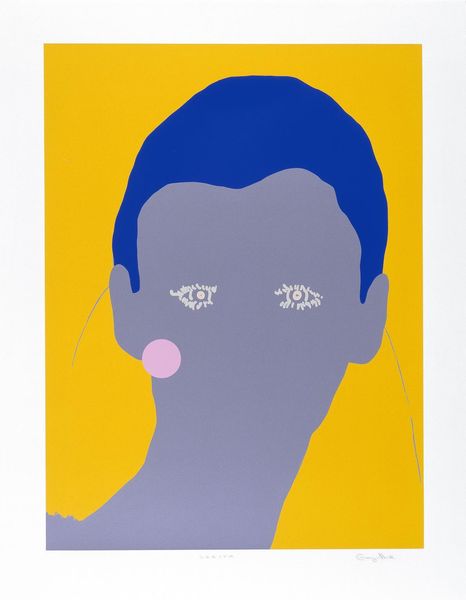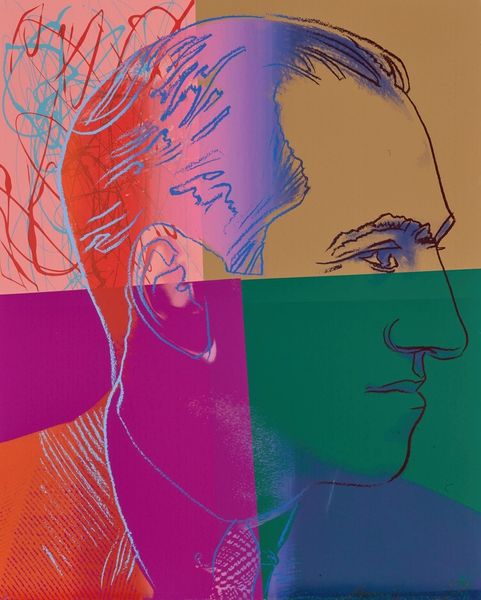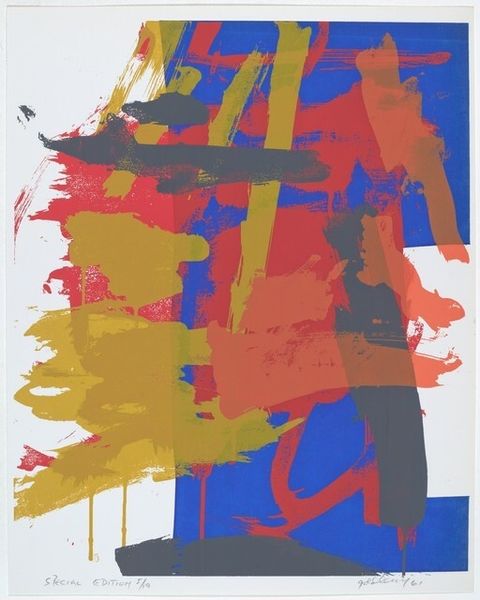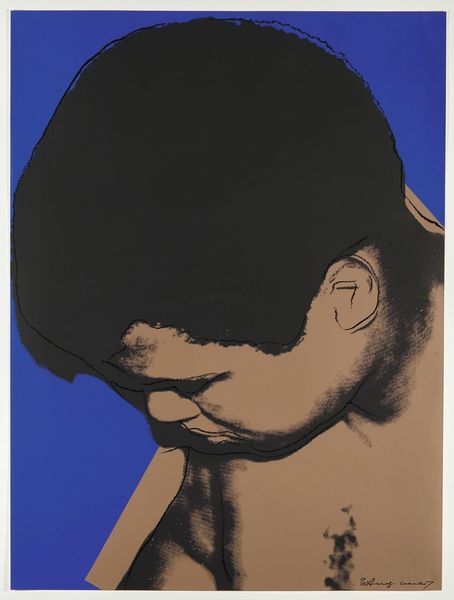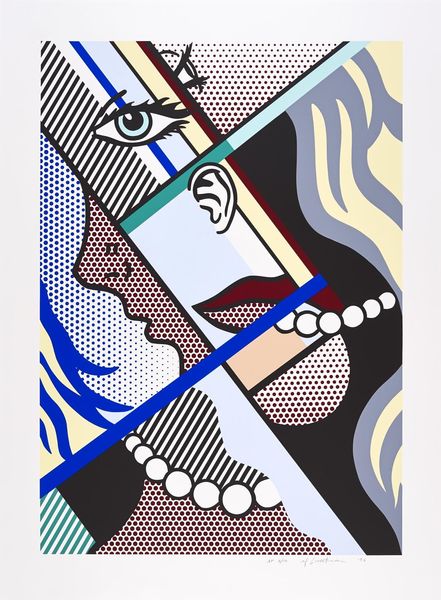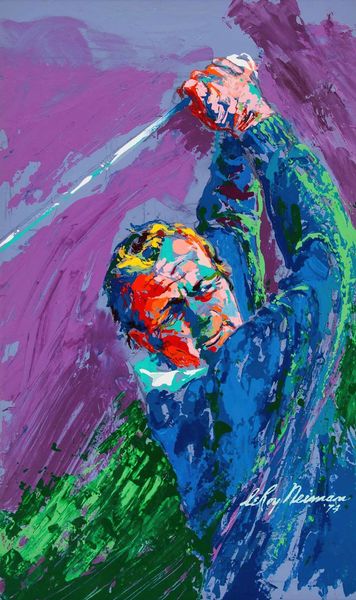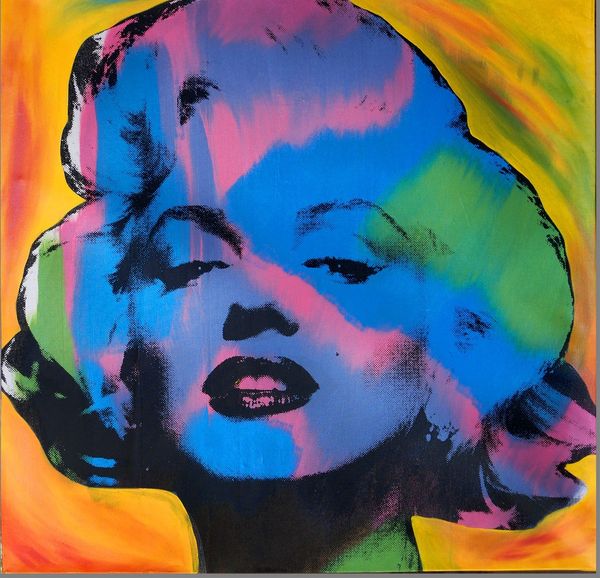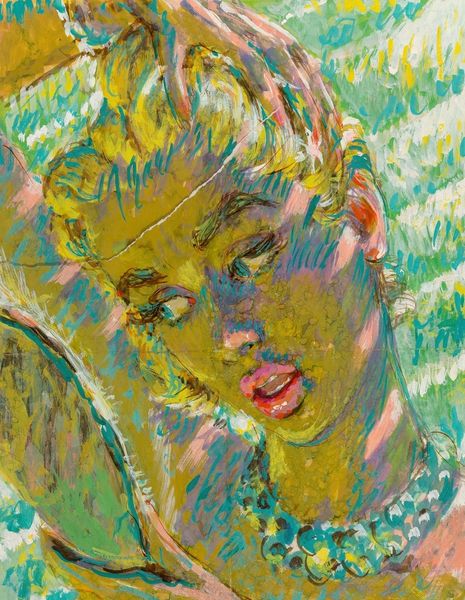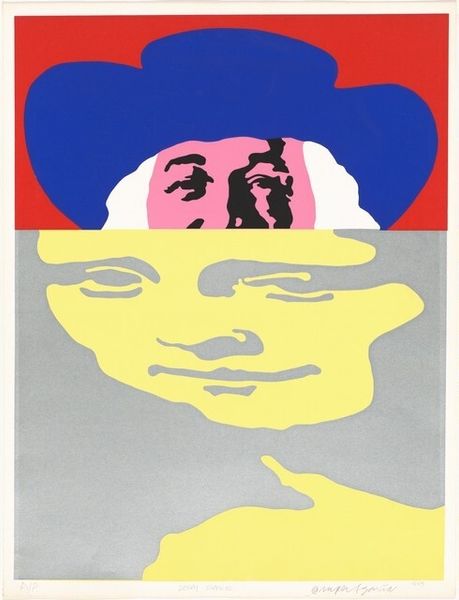
Copyright: Modern Artists: Artvee
Curator: Andy Warhol’s silkscreen print, "Gerard Depardieu," from 1986—what a fascinating take on celebrity portraiture. Editor: My first impression is the deliberate chaos, almost a visual deconstruction. The vibrant blocks of color colliding with the stark black lines...it feels deliberately unsettling, even a little bit mocking. Curator: Mocking, perhaps, but I think it reflects Warhol's interest in how we consume and recreate images of public figures. Note how he fractures Depardieu’s face, rendering it in separate color fields. What symbolic importance do you attribute to this fragmentation? Editor: Well, traditionally, portraits offered idealized and coherent representations. Here, Warhol uses pop art sensibilities to challenge that idea of the singular "truth" behind an identity. It's as though he is suggesting the public persona is pieced together, commodified, and, in some ways, unreal. This work can be perceived as a political commentary, using art to disrupt and question power structures in both media and society. Curator: Indeed. And Depardieu as a subject – already larger than life – embodies that duality. His career has been built on both his talent and his controversies. It highlights how icons operate on dual levels of meaning that play within and against dominant cultural attitudes. Editor: Absolutely. The colours also hit different when considered under the socio-political scope. Considering Warhol’s other silkscreens, like those of Marilyn Monroe, for instance, the vibrancy could signal an era of change or comment on capitalist exploitation. This boldness represents the optimism of the postmodern art movement alongside art’s capacity to respond critically to its conditions. Curator: The silkscreen printing method also echoes a process of reproduction, mass production, suggesting this is one of many, one version of the ‘Gerard Depardieu’ that is distributed among society and pop culture. Editor: Warhol forces us to grapple with the relationship between the real individual and the manufactured image, and with who is really controlling the narrative. The work asks, how can our comprehension be challenged when portraiture and other popular mediums are purposefully reconstructed? Curator: In conclusion, Warhol pushes portraiture into the realm of cultural commentary. By taking a well-known face and presenting it as a series of disconnected fragments, we can consider the role images of public personas take on within society. Editor: Ultimately, ‘Gerard Depardieu’ presents a powerful commentary on identity, commodification, and the blurred lines between the public and the private in a media-saturated world. It shows that what may seem a simple portrait at first reveals complexity and political awareness.
Comments
No comments
Be the first to comment and join the conversation on the ultimate creative platform.
